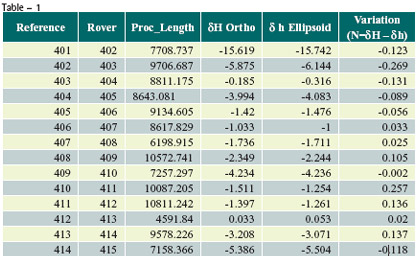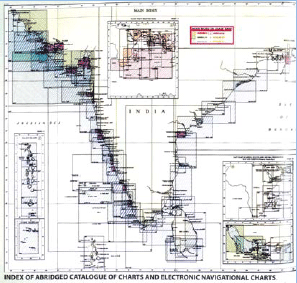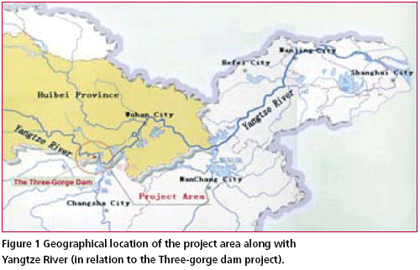Articles in the Surveying Category

The future of the surveying profession is an issue that has been lingering for many years. Recently, the concern has been growing wider and louder among surveyors. Some surveyors contend that the surveying profession, in its current form, is heading towards extinction. Their reasons include a gradual decline in the number of qualified and licensed professionals, impact of emerging technologies, sophisticated and more capable equipment…

Surveying is a service oriented profession, by making maps we do service to the society. The more you serve the society, the more the profession will be known. In a country like India, there is a huge requirement of professionals in the domain of surveying. In the 1970’s a study was done to assess the requirements of the country and even then it was felt that there was need forthree Survey of India (SOI)…

Ten years ago the California Board for Professional Engineers and Land Surveyors (BPELS) attempted to pass a set of rules that required all digital mapping to be performed by Professional Land Surveyors. The motivation for these rules stemmed from the definition of surveying under the California Professional Land Surveyors’ Act, which includes specific reference to digital mapping being within the purview of the Professional Land Surveyor…

Quality hydrographic survey data is essential for efficient maritime development
N R Raut
Assistant Hydrographic Surveyor in Minor Ports Survey Organisation,
Ministry Of Shipping, Road, Transport & Highways.
nrrautahs@yahoo.com
India has long coastline of 7517 kms with 12 major ports and 187 minor & intermediary ports. Major ports all together handled 423 million tones traffic & non–major ports all together …

Rear Admiral K R Srinivasan
Rear Admiral K R Srinivasan
AVSM, IN (Retd), Hydrographic and Oceanographic Expert,
Chief Hydrographer, Government of India
MARITIME Boundary Delineation (MBD) with neighbouring States is an essential need for national security and offshore development, more so for developing States with sizeable Exclusive Economic Zone(EEZ) and Continental Shelf Areas. Whilst it is laudable that India …

CURRENTLY the trend is that more and more project authorities are mandating use of GPS for control work and private surveyors have to comply with this requirement. Dual frequency DGPS have been beyond the financial reach of these surveyors as such most prefer to invest in single frequency DGPS, which cost almost one third the cost of dual frequency DGPS.

World Hydrographic Day is being celebrated on the 21st June every year to commemorate the establishment of the International Hydrographic Bureau by 19 member states in 1921 at the Principality of Monaco at the invitation of HSH Prince Albert I, a noted marine scientist and oceanographer, who had graciously offered the requisite space and facilities free of cost. In 1970, it was renamed as the International Hydrographic Organisation (IHO) and has presently 80 Member States, covering the vast majority of Ocean States. IHO plays a very useful role in Standardisation, International Charts, Capacity Building and Technical Cooperation, Education and Training, Hydrographic Surveying, Charts (paper and digital), Regional Hydrographic Commissions, Cooperation with other International Organisations, Tsunami Information, and nautical Publications.

China has a vast expanse of land with intertwining rivers and mountains, abounds in lakes and reservoirs. The survey of rivers and lakes as well as the protection and exploitation of these resources plays an important role in Chinese economy. Cross-section survey of water bodies is a key part in hydrographic engineering survey. Traditional methods of cross section survey of a river such as theodolite intersection, theodolite stadia, electronic distance measurement, depth-surveying bar, leadline, handlead survey and echo sounder are the main methods used for water bathymetry. These methods are not only prone to the inaccuracy of instruments, distances, weather conditions, intervisibility and communication device, but also involved in tedious workload which leads to low efficiency. Some unfavorable factors such as the flow of the water and the nonlinear movement of the surveying ship make measuring the depth of the water more difficult. Lack of skills and cooperation among surveyors might result in a low accuracy in the position fix of cross-section points, thus further affects the quality of cross-section survey of the river. The application of real-time kinematic (RTK) GPS positioning technique has opened a new avenue for the crosssection survey of rivers (Wu, 2005). Simultaneous utilization of RTK GPS technology and the shipboard sounding method (e.g. digital depth sounder) will greatly improve the accuracy and efficiency of cross-sectioning survey of rivers(Qiu and Fong, 2002; Qiu 2004; Zhang et al, 2002).










 (5.00 out of 5)
(5.00 out of 5)